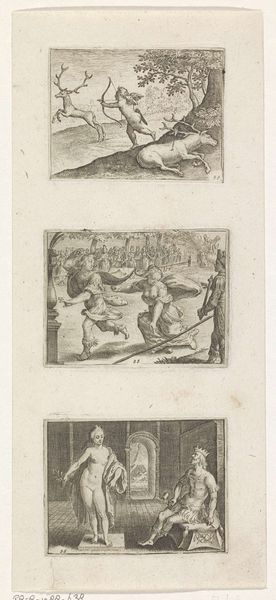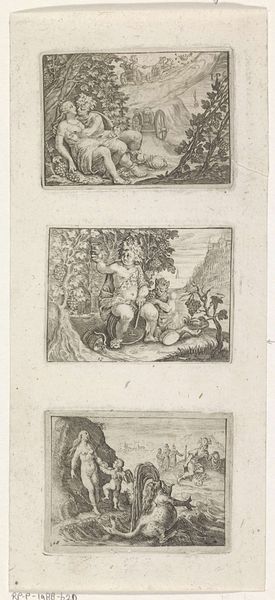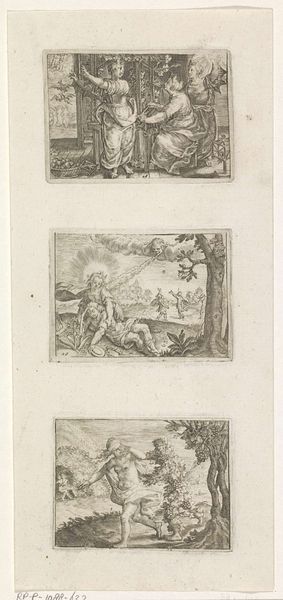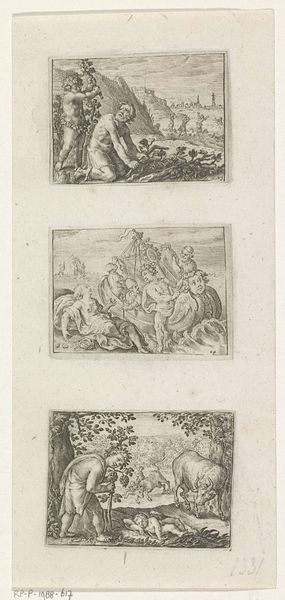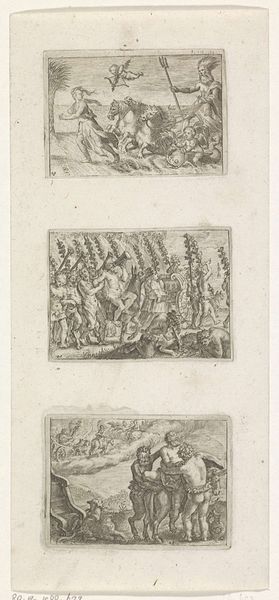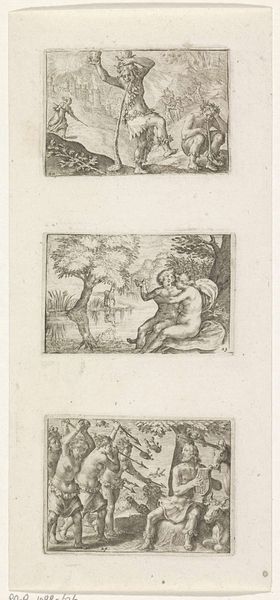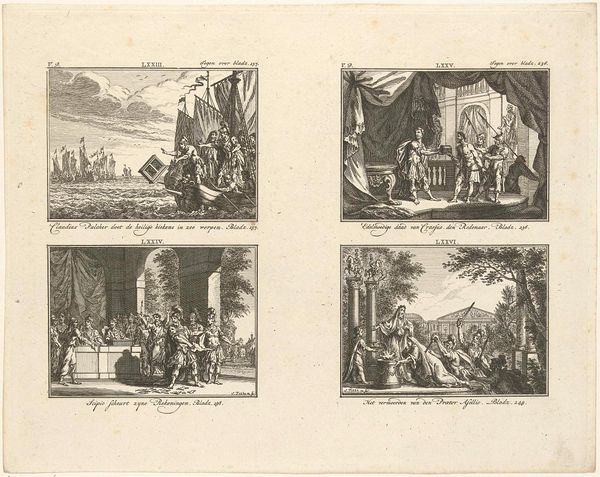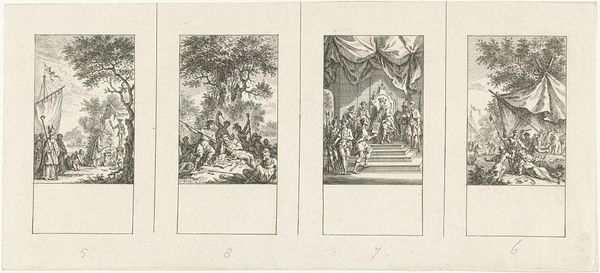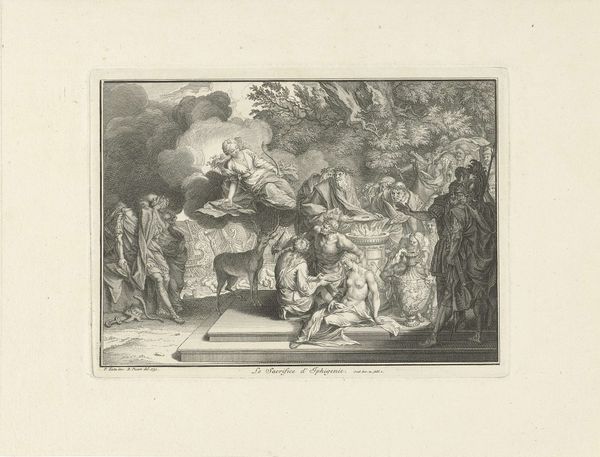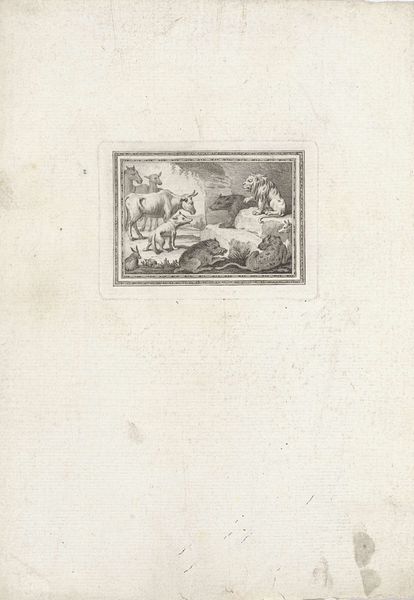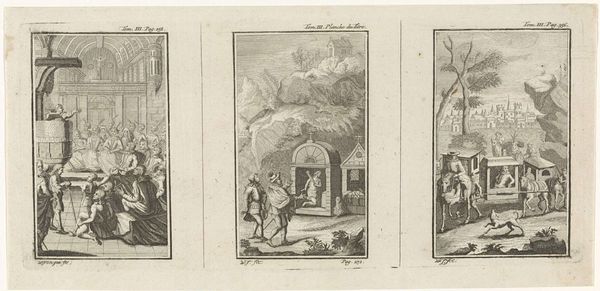
Hercules spint wol / Feest van Bacchus / Jupiter, Juno en Tiresias 1680 - 1800
0:00
0:00
engraving
#
baroque
#
figuration
#
history-painting
#
engraving
Dimensions: height 218 mm, width 99 mm
Copyright: Rijks Museum: Open Domain
Curator: Here we have an engraving from between 1680 and 1800 by the intriguing Monogrammist MP, titled "Hercules spint wol / Feest van Bacchus / Jupiter, Juno en Tiresias." What catches your eye? Editor: There's a fascinating combination of the grandiose and the intimate in these three vignettes, like snippets from a play. The figures appear both monumental and vulnerable within their cramped, heavily rendered scenes. Curator: It's fascinating how the artist captures classical narratives with a distinctly Baroque sensibility. Look at how "Hercules spint wol" is positioned at the top—a potent image of masculine strength humbled, domesticated even. This image speaks to a historical tradition of gender roles and expectations of masculinity that continues to permeate cultural norms. Editor: Indeed, Hercules spinning wool, forced into subservience—the visual is striking. Considering the adjacent scenes, what symbolic links might there be between the drunken revelry of Bacchus and Jupiter's interactions with Juno and Tiresias? Curator: Considering that history painting often served didactic purposes, what messages regarding power, pleasure, and fate do you think MP wanted to explore, especially considering contemporary socio-political dynamics? The "Feest van Bacchus" evokes fertility rites but in a dark tone. Bacchus stands triumphant while those beneath seem lost. There's a chaotic undertone despite the orderly composition. Editor: I see Bacchus as an expression of instinct and release. The revelry may serve as a symbolic contrast with Hercules' subdued posture, indicating two facets of the human psyche and existence. And Jupiter and Juno, archetypes of authority and devotion, appear almost haggard beside the vibrancy of a prophetic scene, implying the constraints inherent in structured, conventional roles. Curator: It speaks to how Baroque art served both to celebrate and to question power dynamics, playing with ancient narratives to comment on present society. This engraving acts as a cultural touchstone reflecting ever-present discussions of strength, weakness, pleasure, and restraint. Editor: These tableaus certainly offer a thought-provoking meditation on human drives. It's like a compressed mythology book. Curator: The artist uses mythic symbols in an intriguing study of the relationship between humans, fate, and authority. Editor: Yes, I concur. It’s quite impressive how they handle those weighty issues with what feels like such intimate artistry.
Comments
No comments
Be the first to comment and join the conversation on the ultimate creative platform.
